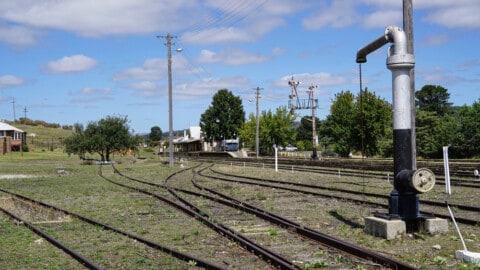By John Merrick, Senior Technical Director, Arcadis
Good engineering design ensures over-station and integrated station developments are sustainable, people-focused and financially feasible.
Prudent engineering choices not only manage risk and maximise functionality, they increase return on investment.
As we discussed in previous articles, the unique design, resourcing and assurance challenges of building over or around a station make over-station and integrated station developments (OSDs and ISDs) more costly than other urban construction projects.
We calculate that technical complexity alone makes a tower with a station around one third more expensive to build than a tower with a basement.
A major cost factor is the engineering demands, especially with an operational station. The most significant are foundations, utilities, vibration, safety and operational needs.
Foundations
Building on top of a station demands significant foundations to bear the load. The deeper and bigger the railway infrastructure, the greater the foundation works and the greater the expense especially in poor ground conditions.
The decking’s load-bearing capacity, its planned use and the quality and alignment of existing piling all determine the cost.
Using extensive geotechnical analysis, our engineers can predict the extent of the load’s impact on the ground at different weight levels and construction stages. Further tests and calculations determine the length, strength and number of piles required.
These investigations extend the project lead time and can be costly, but there are no shortcuts. If the extent and strength of the piles is insufficient, the railway tracks could be impacted when the ground moves under the weight of the decking, potentially causing vibration problems.
There’s also the structural safety risk, as the collapse of a new concrete raft above a railway track at Gerrards Cross in England showed — it was built to bear the weight of a proposed supermarket.
Clearly, load-bearing solutions cannot be compromised. However, our engineers can minimise the need for them.
Reducing the weight the decking load is one solution. We can specify lightweight building material (e.g. composite steel and concrete construction), eliminate heavy transfer structures (e.g. building bridges instead of decking) and replace conventional piling with methods requiring shallower foundations.
Other options include reducing the height of the tower and repurposing space. The design for Earls Court Southern Deck in London, for example, minimised construction weight by including a park above the tracks rather than buildings.
Reusing existing piles – as they are, strengthened, or combined with new ones – also saves money. It brings down new column costs and avoids the expense of removing old foundations and remediating the resulting ground disturbance.
Utilities
In an OSD or ISD, the utility layout will serve the station and the development, so it must accommodate enough cabling for both, and be accessible for maintenance and repairs, particularly if the station is in use.
Cabling is usually located beneath the operational level of the station, creating the risk of disturbance and restricted access if new work is carried out in and around it (for example, the insertion of foundations.
So, our engineers get to know the existing utility layout and take it into account when designing the new one.
We usually advise clients to allow for further expansion in the utility design plan. This will take more time and money, but will save on construction costs later, making the development more flexible and easier to sell.
Vibration
When trains enter and leave the station, they will generate vibration which can affect both developments above and nearby the station.
Whilst the presence of this vibration may be perceptible, its presence can also affect the developments usability and commercial viability. Ultimately, good engineering design mitigates the impact.
The development’s proposed use determines how much mitigation is needed. In general, vibration has a higher negative impact on residential assets than commercial ones.
As a first step protocol, we see if the rail operator is willing to design the trackwork to reduce the vibration transmitted to the surrounding area. This is generally the most efficient and cost-effective solution as the insolation of the development above the rail has greater risks and expense.
Track-related engineering design can suppress them further with due consideration the train rolling stock and trains speeds through the station.
Robust sleepers cause fewer vibrations, so installing sleepers with resilient mountings or clips helps. Isolated slab tracks or floating slab tracks with discrete bearings can also be potential solutions.
To ensure a complete solution, our engineers collaborate with noise and vibration experts on vibration reduction approaches such as isolating the tracks from the development.
Installing flexible elastomeric bearings between the building’s columns and foundations is effective as they absorb vibration. Acoustically isolating rooms by using resilient mountings for floors, ceilings and walls using ‘box-in-box’ construction also works, but can be cost-prohibitive and restricts design options.
Safety
Arcadis’ engineering team ensures that our clients’ OSDs and ISDs comply with the relevant safety regulations for that jurisdiction. Because stations are high-risk, the compliance costs are higher than with other developments. In addition, we often retrofit safety management features into an existing station that was built using different standards – much more expensive than integrating them into a new station design.
We consider the development and the station as a single entity for key elements, starting with comprehensive scenario testing.
How will passengers escape if their train catches fire? Where do we place platform screen doors to stop smoke from entering the station? How many ventilation shafts are needed to optimise station air quality? Will earthing and bonding techniques completely protect buildings from the station’s stray electrical currents?
Safety regulations change continually and new areas emerge, so answering these questions often involves engaging safety specialists. Keeping up to date with the related engineering design techniques is vital.
Recently, security management and blast engineering have become another mandated safety requirement, so we liaise with structural hardening experts, specifying blast-resistant materials and other protective approaches.
Arcadis successfully solves OSD and ISD engineering design problems every day. In our client side roles, we work with the regulator to review and updated the relevant Authority Standards which tend to be based upon traditional railway projects.
This proactive and collaborative approach delivers in cost savings at the early stages, such as the strategic business case.
By using a solutions-focused mindset that accounts for the needs of all stakeholders – owners, developers, travellers and the local community – our engineers help clients to mitigate risk, contain or reduce costs, and ensure each station development is compliant and sustainable.
This partner content is brought to you by Arcadis. It is the second in a series of blogs about the benefits and challenges of OSDs and ISDs. To download Arcadis’ white paper on the subject, Metros people and places, click here.
Find out more about the future of mobility here.
















